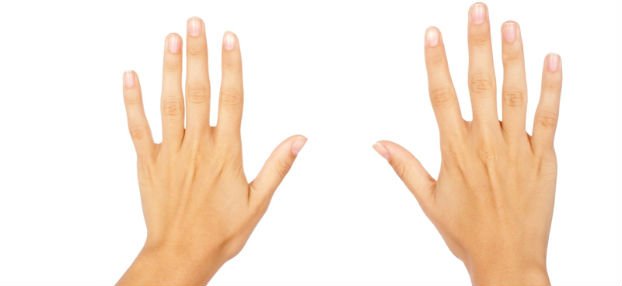Warts are acquired, verrucous vegetations on the skin. Despite the harmless nature, it can be disturbing and sometimes even painful.
Warts (in latin “verrucae vulgares”) are benign lesions, caused by a virus, typically by human papilloma virus or HPV. They can appear in different shapes and forms. Hands and feet are common sites of warts. Especially children are often affected.
What are warts?

Warts consist of a tumorous growth of altered cells of the epidermis, the so called keratinocytes. Through small breaks in the skin, virus particles can enter the cells and transform normal healthy cells to proliferating cells. A weak immune system might facilitate infection with these viruses and the incubation period (the time between the contact or infection with the virus) can vary from weeks to many months or sometimes even years.
For arranging an appointment for treatment of atopic dermatitis or neurodermitis in Vienna, please contact our office by phone +43 1 40114/5701, email (ordination@hautarztokamoto.at) or use the online-form.
Different Warts
Thorn Warts
- Form: exophytic growing nodular lesions
- Size: pin-sized
- Appearance: grey, sometimes with dark dots inside representing blood vessels
- Typical localization: hands, finger and soles
Brush Warts
- Form: out standing, sometimes pendular warts with multiple small ridges (filiform)
- Size: rather small, commonly less than 2 mm in diameter
- Appearance: skin colored, sometimes dark red or even black when it has been bleeding
- Typical localization: around eyes, mouth or neck
Mosaic Warts
- Form: round and flat, usually when multiple warts are grouped in an area
- Size: multiple pin-sized warts in a group
- Appearance: white, light coloured
- Typical localization: can be found on all sites but most commonly on soles
Plantar Warts
- Form: flat or elevated
- Size: tend to grow deep
- Appearance: hyperkeratotic plaque with a rough surface
- Typical localization: palmes and soles
Genital warts (condylomas)
- Form: round nodules, sometimes resembling moles
- Size: typically up to 3-4mm in size
- Appearance: skin colored or darker
- Typical localization: mainly around the genital area, perianal (rectoscopy recommended if found perianal)
Water Warts (Molluscum contagiosum)
- Form: round nodules with a central dent
- Size: typically up to 3-4mm in size
- Appearance: skin colored
- Typical localization: can be found on any site. If transfected sexually, on and around genital area
Water warts (molluscum contagiosum) are transfected by viral infection as any other warts. However, the virus type is different. While all other warts are caused by human papiloma virus (HPV), water warts are caused by a pox virus. The mode of transmission is the same as of HPV: viruses are spread by contact, directly or indirectly, i.e. even without direct contact to a wart or infected person. Therefore, thorough disinfection particularly of the hands are helpful to avoid infection.
Individual treatment in Vienna
Treatment removes existing warts and prevent spread of the warts on other parts and infection of unaffected people.
The following treatment options are commonly used:
Peeling medicine
They are based on salicylic- or lactic acid and dissolve the corneal part of the wart so that eventually, warts fall of with the help of mechanical tractation. As the wart becomes softer, it is also easier to treat with a file or slicer. If treated successfully, the scar is removed within 3 to 4 weeks without leaving a scar.
Cryotherapy using liquid nitrogen
Icing with liquid nitrogen leads to blistering. This effect is used to lift up the wart from the skin. This treatment is often repeated several times until the wart eventually falls off. Liquid nitrogen is effective on areas where the skin is not so thick such as soles and palms.
Electrocauterisation
Under lokal anaesthesia, the scar can be burnt away. This method is very effective, however, it will leave an ulcer., and expect scaring after the treatment. This method is recommended on areas that are not delicate or visible, and when other methods have not been successful.
Laser (not offered in the office)
CO2- or dye-laser can also be used to remove warts. Hygienic measures such as wearing masks are required to prevent from infections caused by the pulverization of the warts. While smaller and flat lesions can be removed, laser is not as efficient for removing larger or deep warts.
Despite various treatment options, sometimes, treatment must be repeated as there is an estimated recurrence rate of 30%.
Prof. Dr. Okamoto is a board certified dermatologist in Vienna, Austria. For appointments, please phone +43 1 40114/5701 or email at ordination@hautarztokamoto.at or fill out the contact form
Tipps to avoid warts von Prof. Dr. Okamoto
- Use flip flops or sandals in public pools. Using alcoholic desinfectants helps avoiding transmission
- Do not share towels, sponges, flannels, creams etc. with others.
- For condylomas, the risk can be reduced using condoms. However, condylomas are not limited on the covered area and the virus can be spread also by body fluid.
Contact Prof. Dr. Okamoto
For appointments, please contact us by phone +43 1 40114/5701, 5702 or 5703, or via E-Mail at ordination@hautarztokamoto.at or contact form.
